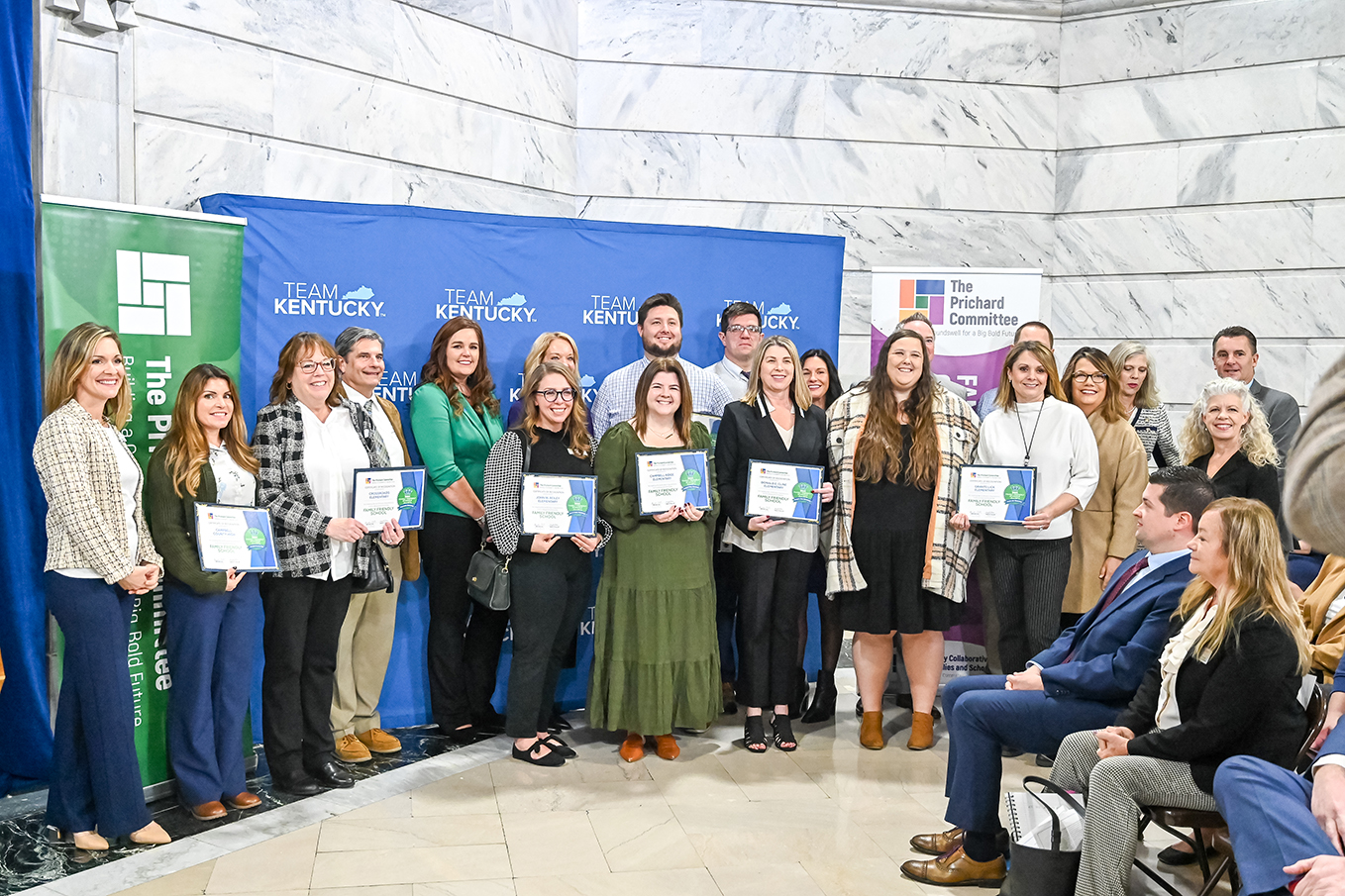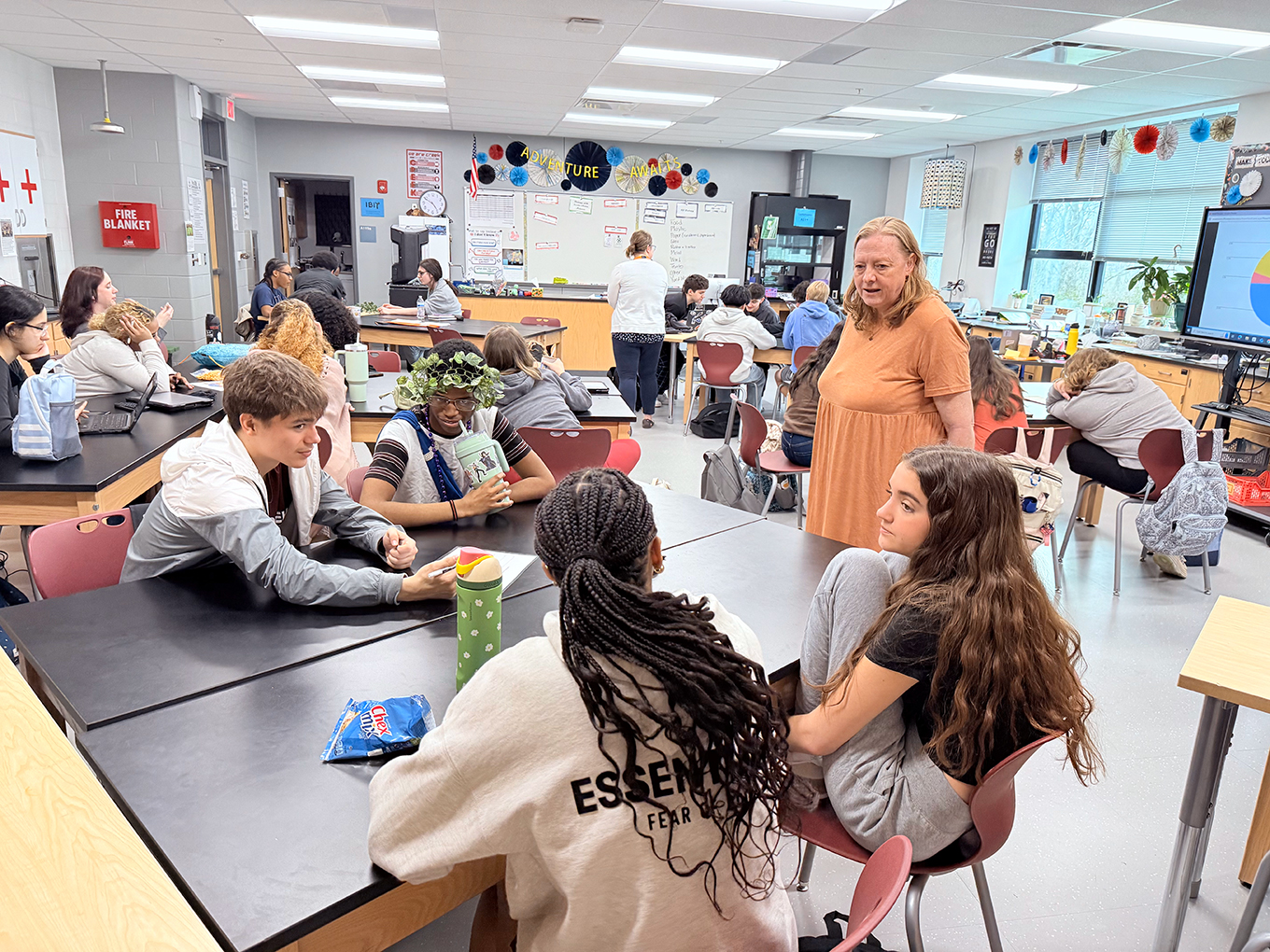
Family Night at Lansdowne Elementary School. Photo courtesy Naema Shalash
My name is Naema Shalash, and I am a Palestinian-American Muslim, born and raised in Lexington. I have been part of the Fayette County Public Schools (FCPS) family for 15 years. For 12 of those years, I taught fifth grade at Lansdowne Elementary, and for the last three years, I have served at the school in an intervention role. In addition to teaching, I lead the Family and Community Engagement (FACE) committee and oversee the Title I program at Lansdowne.
Throughout my time at Lansdowne, I have witnessed the power of strong school-family partnerships and its crucial role in student success. Earning the Family Friendly Certificate has further validated Lansdowne’s ongoing efforts and provided new insights into how we can continue to engage families effectively.
The decision to pursue the Family Friendly Certificate came from an increased focus on recognizing the work we were already doing with our families. I was unaware of the certification until last year when Carissa Lipp, our school’s Title I liaison, brought it up at one of our FACE committee meetings. After learning about the certification and reviewing its requirements, I realized that our school had already been implementing many of the practices necessary to achieve it. This recognition felt like a natural step forward to affirm our school’s dedication in fostering meaningful relationships with our students and their families.
While the application process for the Family Friendly Certificate was more complex than I initially anticipated, it was worth the effort. I teamed up with Brenda Adams, our school counselor, and we tackled the lengthy application. We found our school is deeply engaged in family and community initiatives, so we wanted to ensure we included all relevant activities and evidence we could. The biggest challenge was gathering and organizing all the documentation in one place to present a cohesive application, especially since the reviewers knew nothing about our school.
One of the most surprising parts of the certification process was realizing that we did not need to change our approach to meet the requirements. We were already aligned with the key practices outlined in the certification guidelines. Our main adjustment was in how we documented and showcased our efforts. The application process made us realize the importance of maintaining detailed records of family engagement activities, feedback and their impact. We need to be better with this, which has inspired us to be more proactive in tracking and sharing our successes.
The process of working toward this certification and achieving it has strengthened our understanding of what it means to be truly family friendly. It has reminded us of that strong relationships with families are the foundation of an enriched school environment where students feel supported and motivated to succeed.
For other schools considering whether to pursue the Family Friendly Certification, my advice is simple: it’s worth it and try not to get discouraged by the lengthy application. Even if your school already has a strong culture of family engagement, the process can help you reflect on your current practices, recognize gaps, and fine-tune your approach. The certification is not just a banner to hang in your school’s hallway; it is a reaffirmation of your school’s commitment to partnering with families to provide the best educational experience possible. For those just starting out, know that this is a process that honors the hard work you’re already doing and encourages continued growth.
Each year, the Prichard Committee for Academic Excellence awards Family Friendly Schools Certification to a group of schools and early care centers. This school and 53 others earned the certification in 2024. For more details on Family Friendly Schools Certification, visit the Prichard Committee’s family engagement website.




Leave A Comment